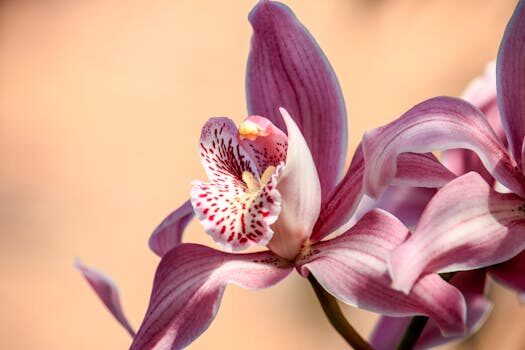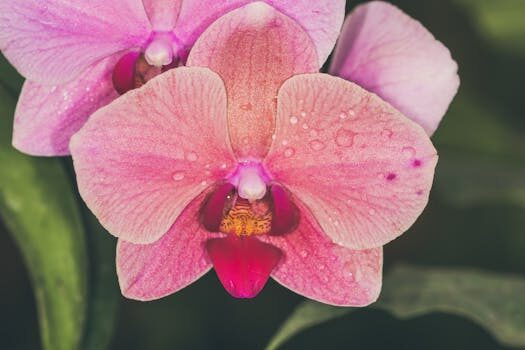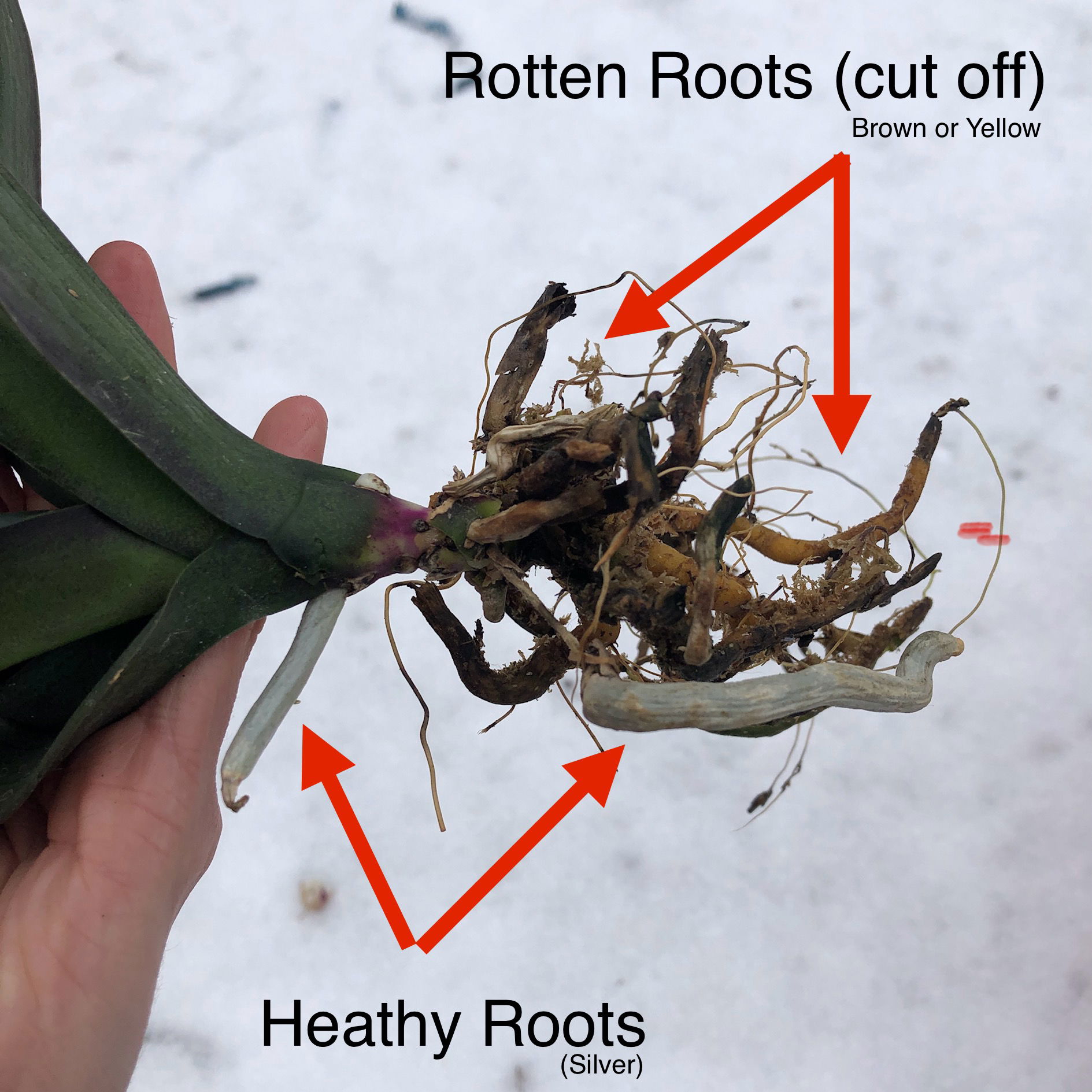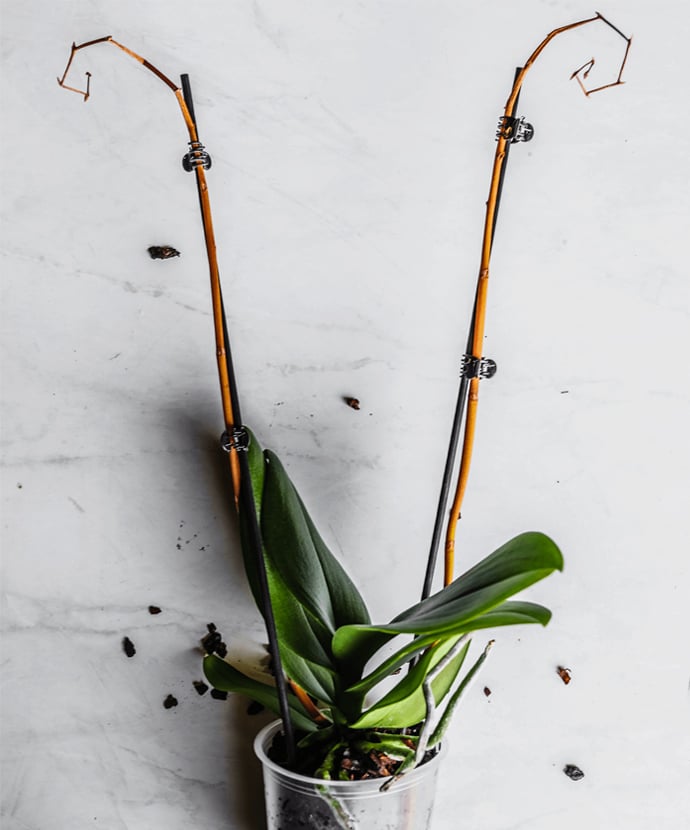If you’ve stumbled upon your prized orchid and noticed its leaves hanging lifelessly, you may be wondering, “Why are my orchid leaves drooping?” Droopy orchid leaves can be a sign that your plant is in distress and prompt attention is required to return it to its lush, vibrant state. Orchids are sensitive plants, and their leaves often serve as an indicator of their overall health. Let’s explore the reasons behind this common issue and how to address them.
It’s important to remember that the reasons for droopy orchid leaves can range from environmental stress factors to more specific horticultural mishaps. By identifying the cause, you can take the necessary steps to revive your orchid and prevent future issues.
How to fix droopy orchid leaves?
The first step in addressing droopy orchid leaves is to diagnose the cause. Look for signs such as overwatering, which can lead to root rot, or underwatering, which results in dehydration. A simple adjustment of your watering schedule may be all that is needed.
Make sure the potting medium is well-draining and consider repotting if it has degraded and retains too much moisture. Over time, a bark-based medium will break down and can smother the roots, preventing them from breathing properly.
It is also essential to assess the light and temperature conditions. Orchids prefer bright, indirect light and a consistent temperature range. If the leaves are too dark green, it could mean they are not getting enough light; if they are reddish, they might be getting too much.
Finally, consider the humidity levels. Orchids thrive in a humid environment, ideally between 40-70%. If your home is too dry, a humidifier or a humidity tray can help.
Will droopy orchid leaves recover?
Many orchid owners wonder whether their plant’s droopy leaves will ever perk back up. The good news is that with the correct care and adjustments, droopy orchid leaves can recover. However, it is vital to act promptly to address the underlying issues.
Once the proper conditions are restored, give the plant some time to adjust. New growth should appear healthy and vibrant. In some cases, the damaged leaves may not recover fully, but as long as the new leaves are healthy, your orchid is on the right track.

Patience is key as orchids can be slow to respond to changes in care, and it may take weeks or even months to see improvement.
Why are my orchid leaves wrinkled?
Wrinkled orchid leaves are often a symptom of dehydration. When an orchid doesn’t receive enough water, its leaves can lose their plumpness and firmness. To solve this, ensure you are watering your orchid correctly. Orchids should be watered thoroughly, allowing water to run through the potting medium and out of the drainage holes.
However, wrinkled leaves can also be a sign of overwatering, especially if they feel soft and mushy. Overwatering can lead to root rot, where the roots are damaged and unable to take up water effectively.
Examine the roots of your orchid; healthy roots should be firm and green or white. If they are brown and soft, you may need to cut away the damaged roots and repot the orchid in fresh potting media.
What causes orchid leaves to drop?
Leaf drop in orchids can be caused by a variety of factors, including extreme temperature changes, poor air circulation, and pest infestations. Temperature fluctuations can stress orchids, causing leaves to drop as the plant attempts to conserve its resources.
A lack of air movement can lead to a buildup of humidity around the leaves, creating an environment conducive to fungal and bacterial growth. Ensure your orchid is in a location with gentle air flow to prevent these issues.
Additionally, pests like scale, mites, or mealybugs can cause leaves to drop by sucking on the plant’s sap, weakening it. Regularly inspect your orchid for signs of pests and treat them promptly with an appropriate insecticide or natural remedy.
How to prevent droopy orchid leaves?
To prevent droopy orchid leaves, it’s important to maintain consistent and appropriate care for your plant. Here’s a checklist to help keep your orchid in top condition:

- Water your orchid adequately, allowing the potting medium to dry slightly between waterings.
- Provide bright, indirect light, avoiding direct sunlight, which can scorch the leaves.
- Monitor and adjust humidity levels, keeping them between 40-70%.
- Ensure good air circulation around the plant.
- Feed your orchid with a balanced fertilizer regularly, following the instructions on the label.
- Repot your orchid every 1-2 years or when the potting medium breaks down.
Should I cut off droopy orchid leaves?
If you find that some of the orchid leaves are droopy and damaged beyond recovery, it may be best to remove them to allow the plant to focus its energy on new, healthy growth. Use a sterile cutting tool to gently remove the affected leaves at the base, taking care not to damage the healthy parts of the plant.
However, if the leaf is still partially healthy, you may choose to leave it on the plant. Often, a leaf will droop due to temporary stress and recover with proper care. Assess each leaf individually and make a judgement call based on its condition.
As a complement to the information provided, take a look at this insightful video that delves into the topic of orchid care:
Related Questions on Droopy Orchid Leaves
How do you fix droopy orchid leaves?
To fix droopy orchid leaves, start by identifying the cause of the droopiness. This could range from watering issues to light and temperature problems. Adjust your care routine accordingly, provide the orchid with a stable environment, and consider repotting if necessary.
It’s also beneficial to trim any severely damaged leaves or roots to help the orchid focus its energy on healthy growth. Remember that recovery can take time, so be patient with your plant.
How to tell the difference between overwatering and underwatering an orchid?
The key to distinguishing between overwatering and underwatering is to examine the orchid’s roots and leaves. Overwatered orchids typically have yellowing leaves and soft, mushy, dark-colored roots, while underwatered orchids have dry, brittle roots and wrinkled, crispy leaves.
Another method is to check the weight of the pot; a lighter pot usually indicates the need for water, while a heavier pot suggests overwatering. Adjusting your watering schedule based on these observations is crucial.

How often should an orchid be watered?
Orchids should be watered when the top inch of the potting medium is dry to the touch, which is typically every 5 to 12 days, depending on the environment and the type of orchid. It’s important not to have a rigid watering schedule but rather to water based on the orchid’s needs and the moisture level of the growing medium.
Remember, the frequency can vary with changes in temperature, humidity, and light throughout the year. In winter, orchids may need less water, while in summer, they may require more frequent watering.
What does a stressed orchid look like?
A stressed orchid may display a variety of symptoms, including droopy, discolored, or wrinkled leaves. Flower buds may drop before opening, or the flowers may be deformed. The roots may appear unhealthy, and the overall growth can be stunted.
Addressing environmental factors and ensuring the orchid has the right conditions for growth is vital to reduce stress and promote a healthy plant.
By understanding the needs of your orchid and providing it with a supportive environment, you can enjoy the beauty of its flowers for seasons to come. Remember to monitor your plant regularly and be responsive to any changes in its condition to maintain its health and vitality.
 What causes orchid root rot and how to solve it?
What causes orchid root rot and how to solve it?

This post is super informative! I always thought my droopy orchid leaves were just a normal part of the plant’s cycle, but now I see there could be so many underlying reasons. The tips on assessing watering habits and light conditions are especially helpful. Definitely gives me a game plan to help my orchids thrive. Thanks for breaking it down so clearly!